Baklava Recipes Can Vary A Lot!
This is my husband’s family baklawa or baklava recipe and he has given me permission to share it with each of you! You are in for a treat. There is a lot of debate as to where the baklava or baklawa recipe originated from. Some believe baklava originated from the Assyrian empire where layers of bread dough were stretched thinly and baked with chopped nuts and honey. The Assyrian empire consisted mainly of Iraq, Iran, Turkey and Syria around 800 BC. Then as trading grew, it is said Greeks added phyllo (leaf) dough and as trading continued, a variety of spices, infused waters and nuts were added to this delightful dessert. The Ottoman Empire is also often credited with inventing this fabulous dessert. And you can go down a rabbit hole reading about the Assyrian versus Ottoman empires and so many tragedies that took place.
You can read and listen to several opinions, but it seems like the origin will continue to be hotly debated. And why wouldn’t everyone want to take credit for such a wonderful recipe that has hundreds of yummy variations to this day? You can read a lot more about the history of baklava here and other places and decide for yourself. In the meantime, let’s discuss this version.
My husband’s family is from both Syria and Lebanon. His mother and her immediate family are Syrian, but relatives have married Lebanese along the way. Some added in a teaspoon of orange oil. Others, rose. Others both. And spices galore. A bit of cardamom on one side and some cloves from another. And then there are which nuts to choose. There can be arguments where people stop talking to each other and start seething over pistachios, almonds, walnuts or a combination. Within his family, there are so many variations that’s it’s difficult to choose which one to share. So my husband and I got to talking: let’s make it basic and accessible for most people to make. Then they can start adding their own little variations and call it their own family recipe.
For that reason, we are going to stick with the basics most people can obtain for an affordable price. And we will add some notes on optional waters, spices and types of nuts. But for today, we are going simple and using walnuts. Mainly because they are the most affordable nuts in the US currently. And the fact that I am one of those people who can have an allergic reaction when handling pistachios. Did you know they are related to poison ivy? We learn something new everyday.
Let’s get to making this amazing baklava recipe. The syrup will also be modest and with ingredients that are not expensive or hard to find. And we will be using packaged phyllo that can be found in most grocery stores. Because phyllo or filo is so hard to make even for an experienced baker. Everyone in my husband’s family buys prepackaged phyllo these days. They don’t want to take the arduous time, either.
Step-By-Step Instructions
Let’s do a step-by-step on how to make this baklava recipe. There are a few tricky parts, but it’s easy once you get the hang of it!
Step 1: Prepare the Syrup
For the ultimate baklava experience, the syrup should be made the day before. At the very least, you want to make it the morning off and chill it down before pouring it over the baklava. This will ensure a lovely flavor without the sogginess that can happen. The first thing you want to do is zest and juice a fresh lemon. You can make the decision on whether or not you want to include the zest. We highly recommend it. If you cannot find a lemon, bottled juice will work in a pinch. You will only be using a small amount of the juice, so save the rest for another project. Lemon cupcakes, perhaps?
One other tip: if you are using store bought phyllo like we are here, be sure to thaw it out tonight. At the bare minimum, it needs a few hours on the counter. So here’s another argument for making the syrup the night prior to baking.

In a heavy saucepan, add the sugar, lemon zest, juice, honey and water. If you want to experiment with orange blossom or rose water, now is the time to add a splash. A thinner saucepan isn’t recommended as it could cause the sugar to burn as it heats up. If that’s all you have, turn down your heat and watch it carefully.
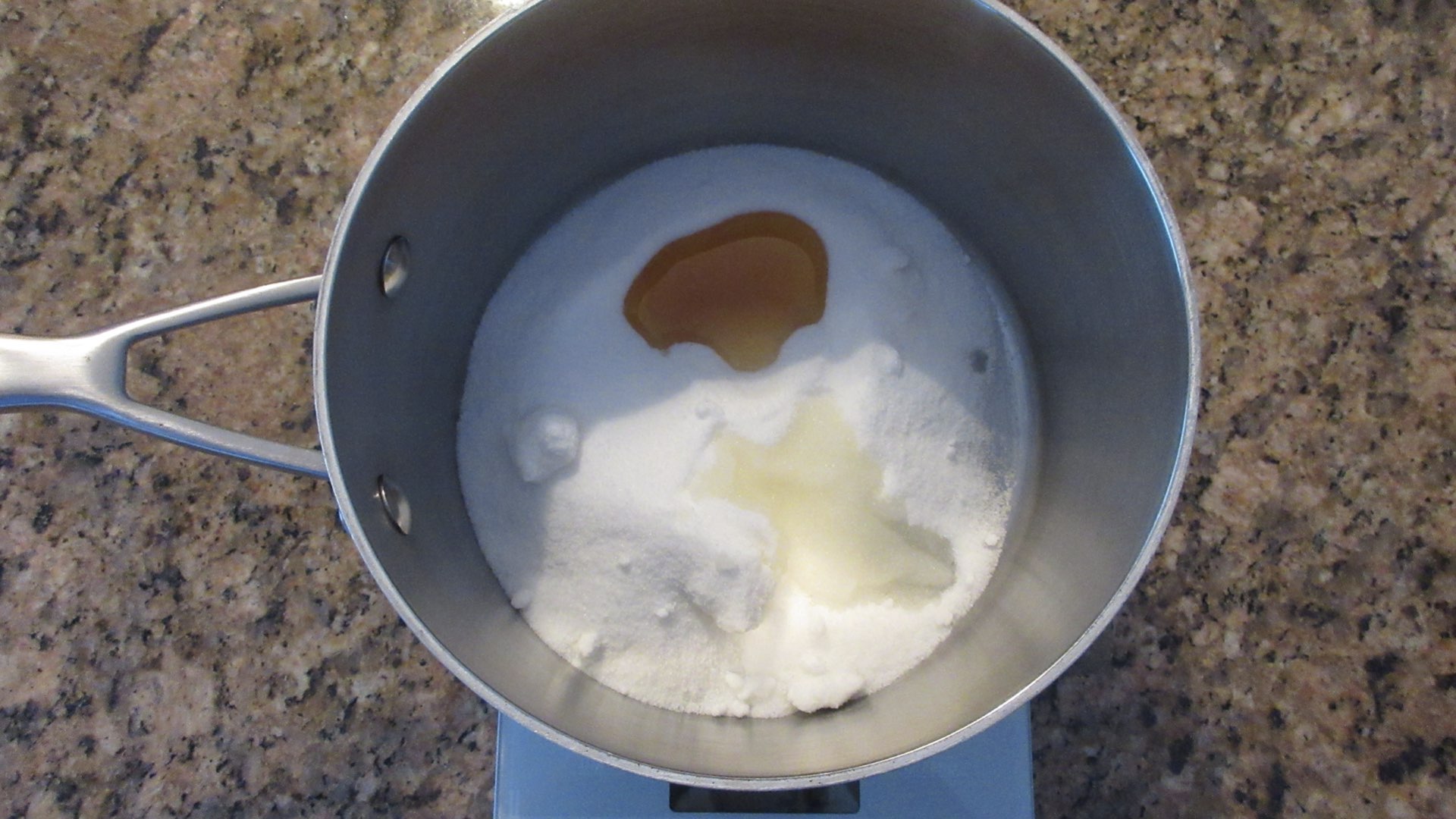
Stir only until sugar dissolves. Boil several minutes untouched to thicken the syrup. Turn the syrup off the heat and allow it to cool.

Pour cooled syrup into a container and chill overnight. This will bring out the flavors and ensure you have delicious crispy and syrupy baklava in the end.

Step 2: Prepare the Filling
The next day, we are ready to make baklava! Blend together nuts, spices, brown sugar and salt. This is the time to experiment with new spices if you desire. Perhaps 1/2 tsp (1 gram) of cardamom would be nice?
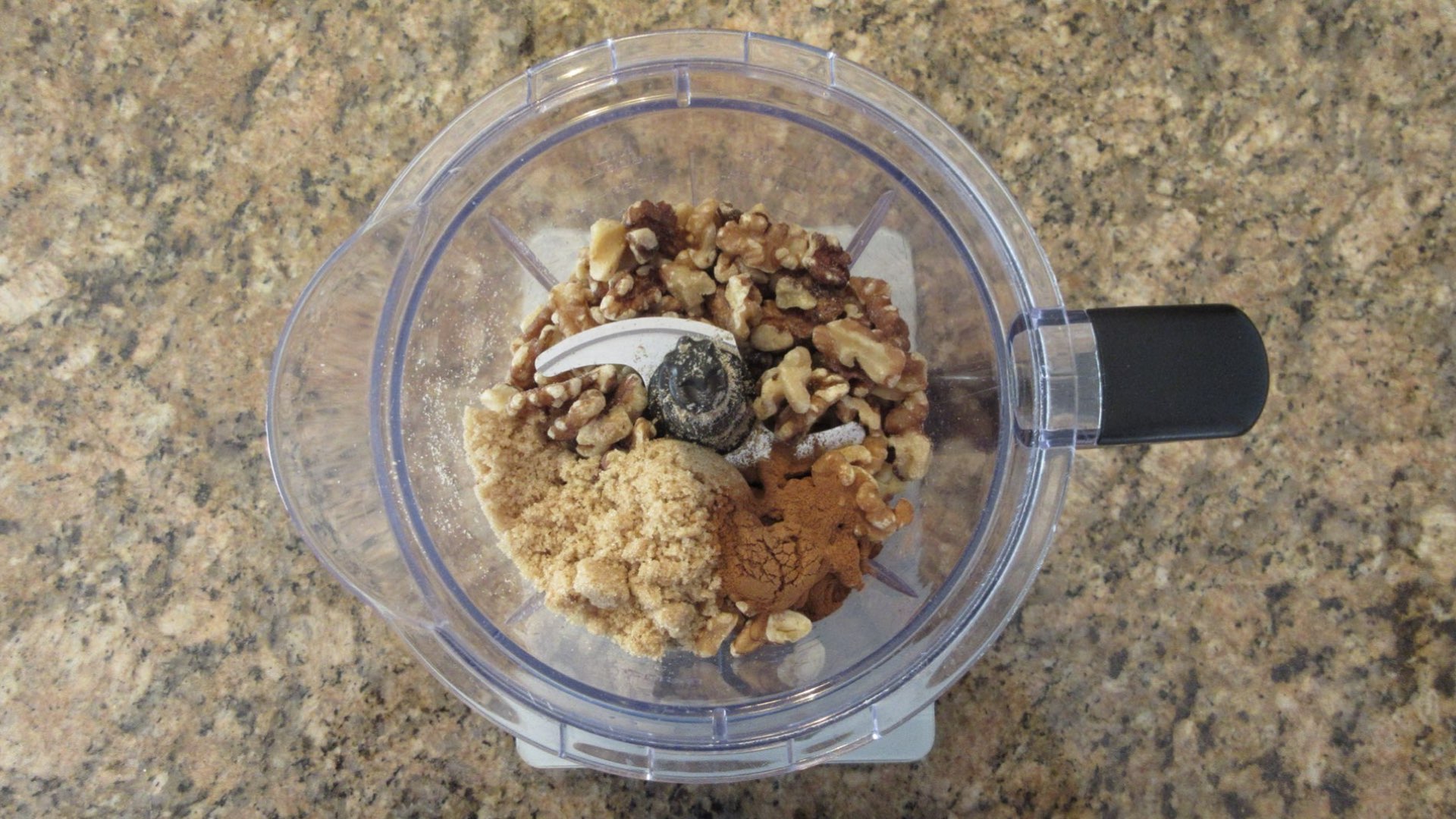
You want them on the finely chopped side. A few larger pieces are okay. And don’t grind them so smooth they become oily. Try to get the following texture.
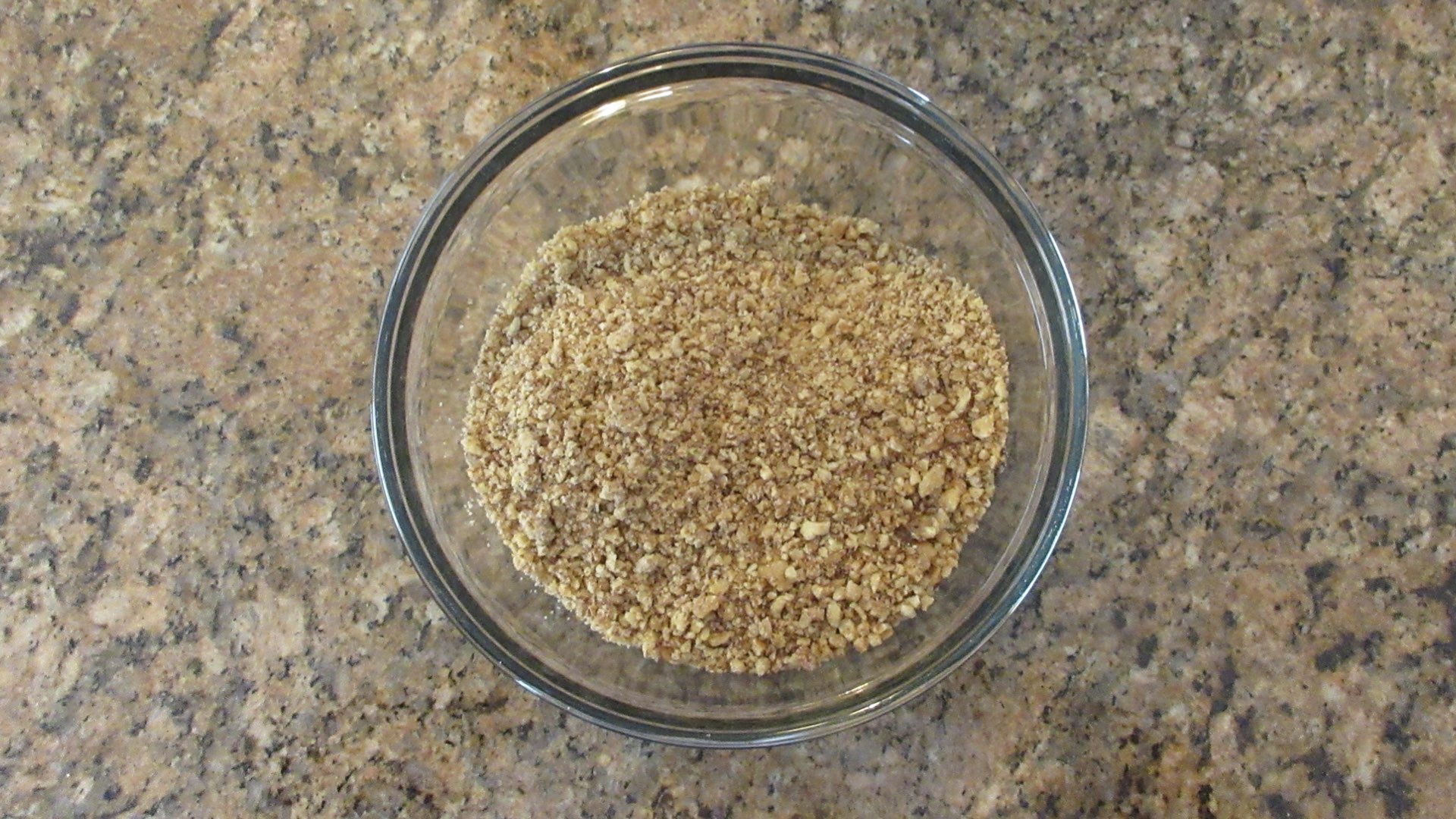
Step 3: Prepare the Butter
You have two choices here to make. You can simply melt butter like we did here or you can make clarified butter for a fancier version! Honestly, both are pleasant and melted butter is cheaper. So we stick with the basics.
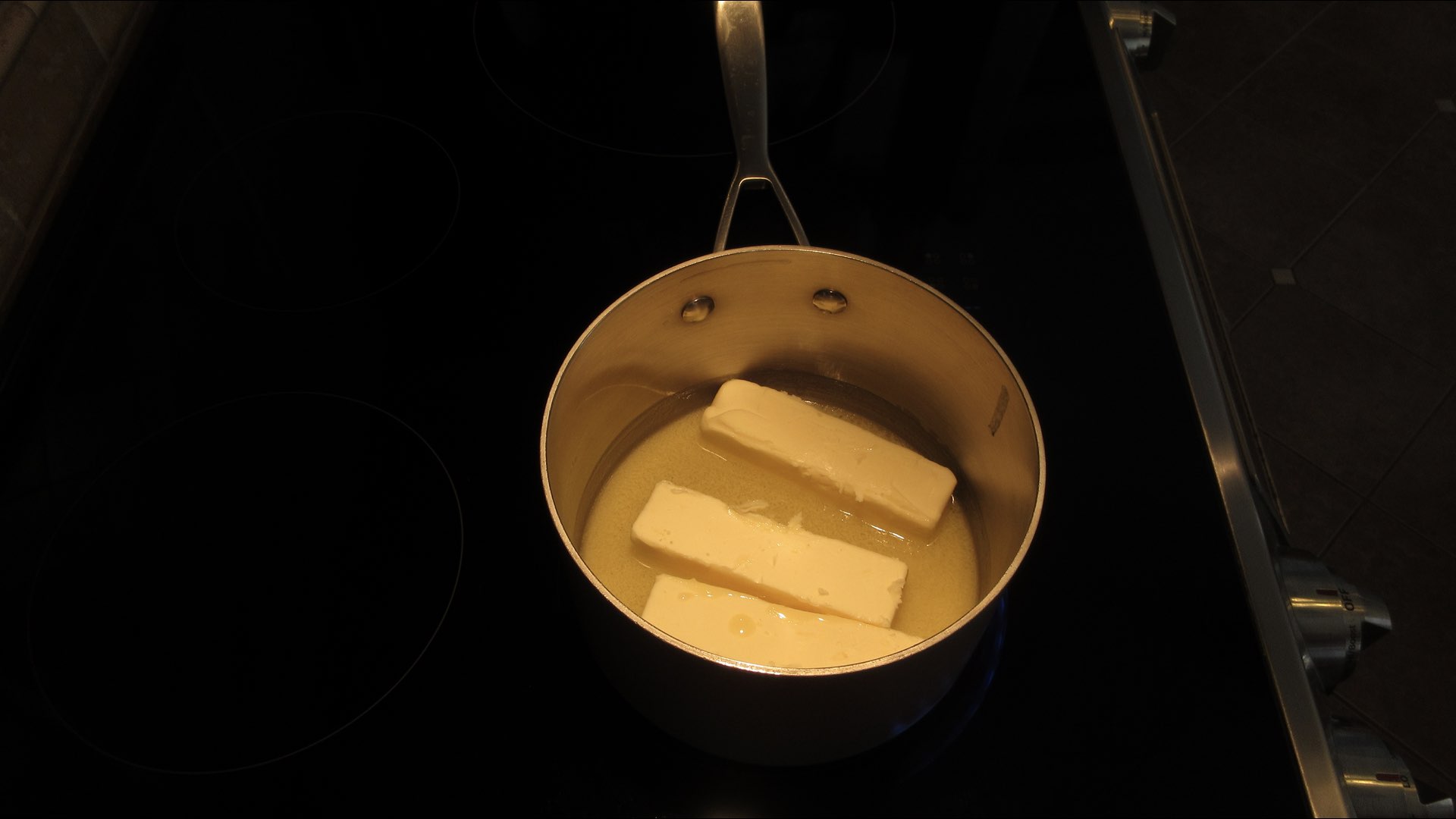
Step 4: Mise en Place (Gather your Stuff!)
This step is often overlooked in baking, but it’s pretty critical here. You want to gather up all your ingredients. Phyllo dough dries out quickly. You do not want to be looking around for equipment or putzing around while assembling layers. Also, forgive the sunshine. It was a bright day! And baklava is rather expensive to make. So, it’s here for the journey.
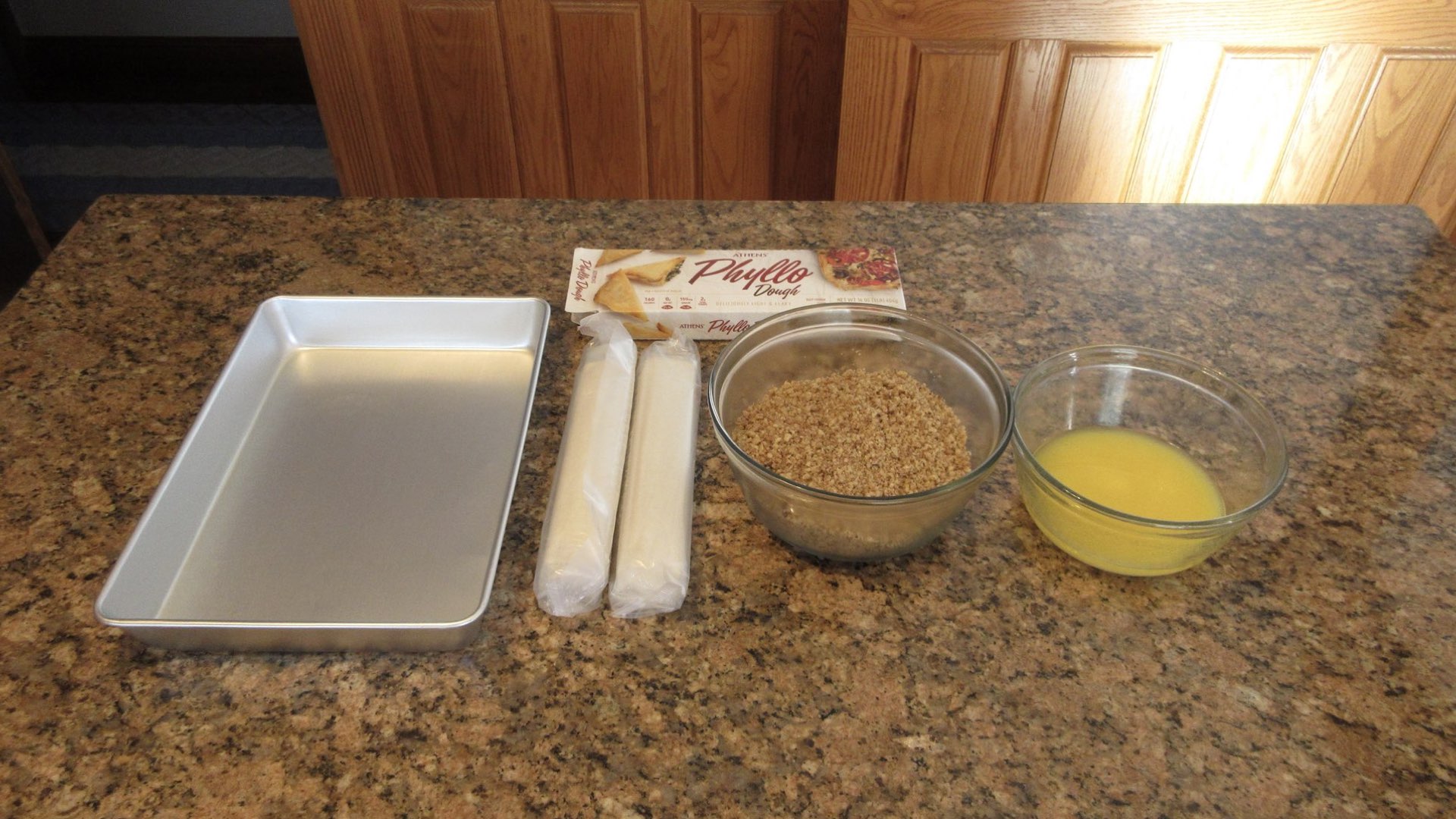
Unroll thawed phyllo and cover with plastic wrap. This will ensure the phyllo stays pliable and doesn’t dry out and crack.
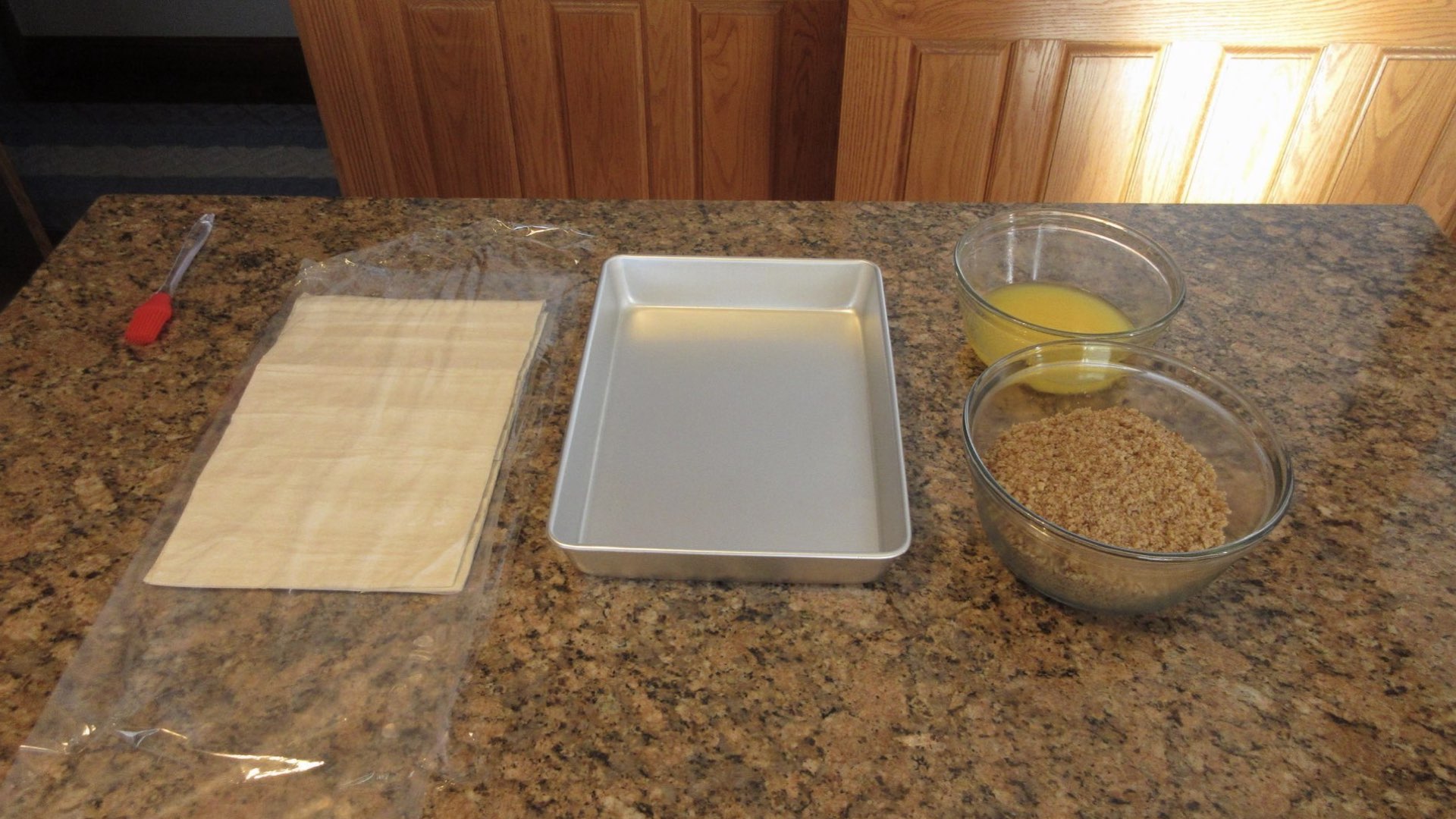
Then use a damp towel. This keeps it weighed down and aids in keeping the phyllo sheets workable.
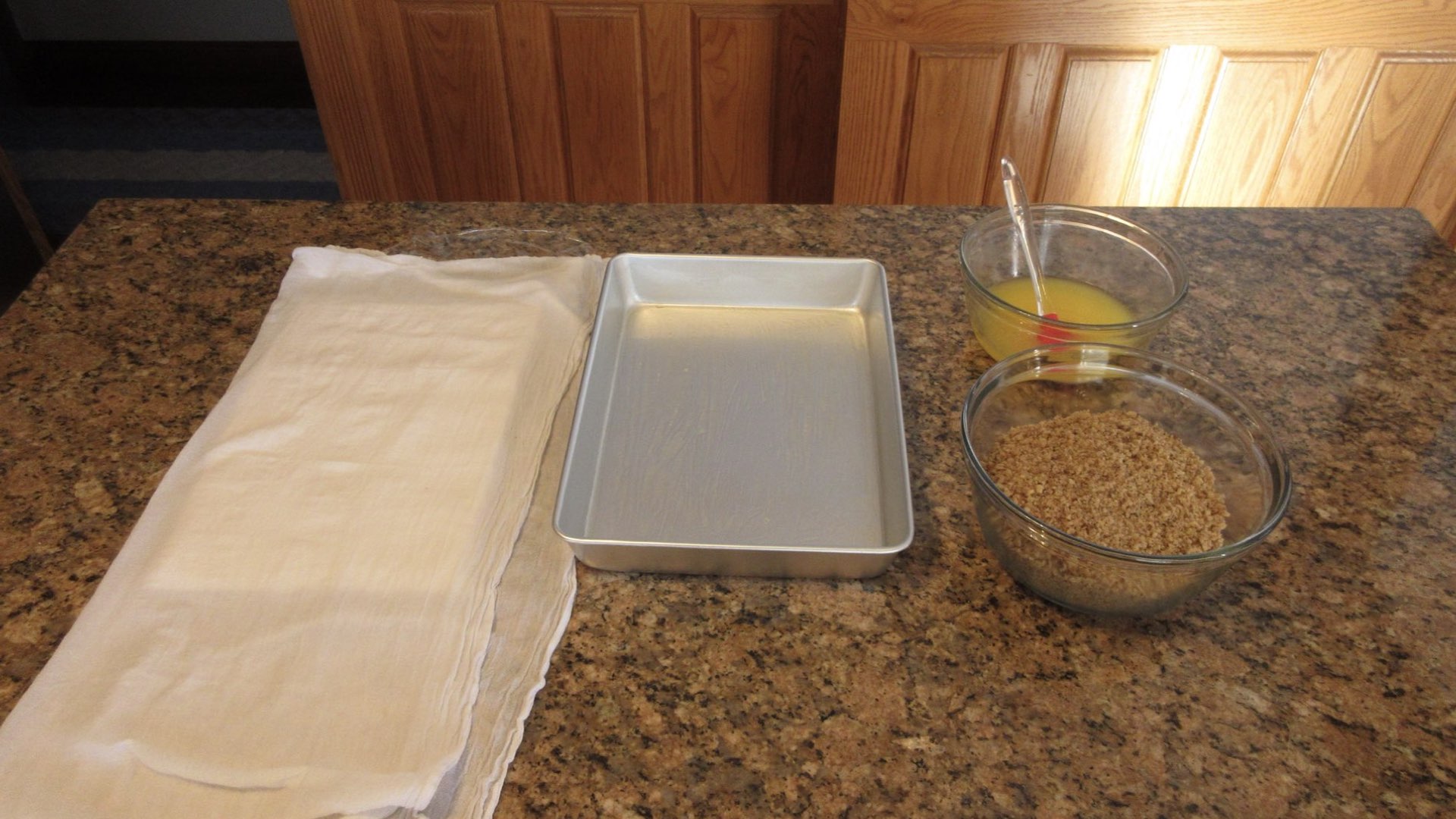
Step 5: Assemble the Baklava
Generously butter the sides and bottom of pan. Next, top with a single sheet of phyllo dough. Brush a thin layer of butter on top of the phyllo. Add another sheet of phyllo and butter the top. Repeat for a total of 9 layers of phyllo and butter.

Next, you want to cover the top layer of phyllo with 1/4 of the nut mixture. This is approximately one cup (113g) of nuts. Spread it out in a thin and even layer.

Then, lay a sheet of phyllo on top of the nut mixture. Brush a thin layer of butter on top of the phyllo. Add another sheet of phyllo and butter the top. Repeat this process for a total of 6 layers of phyllo and butter.
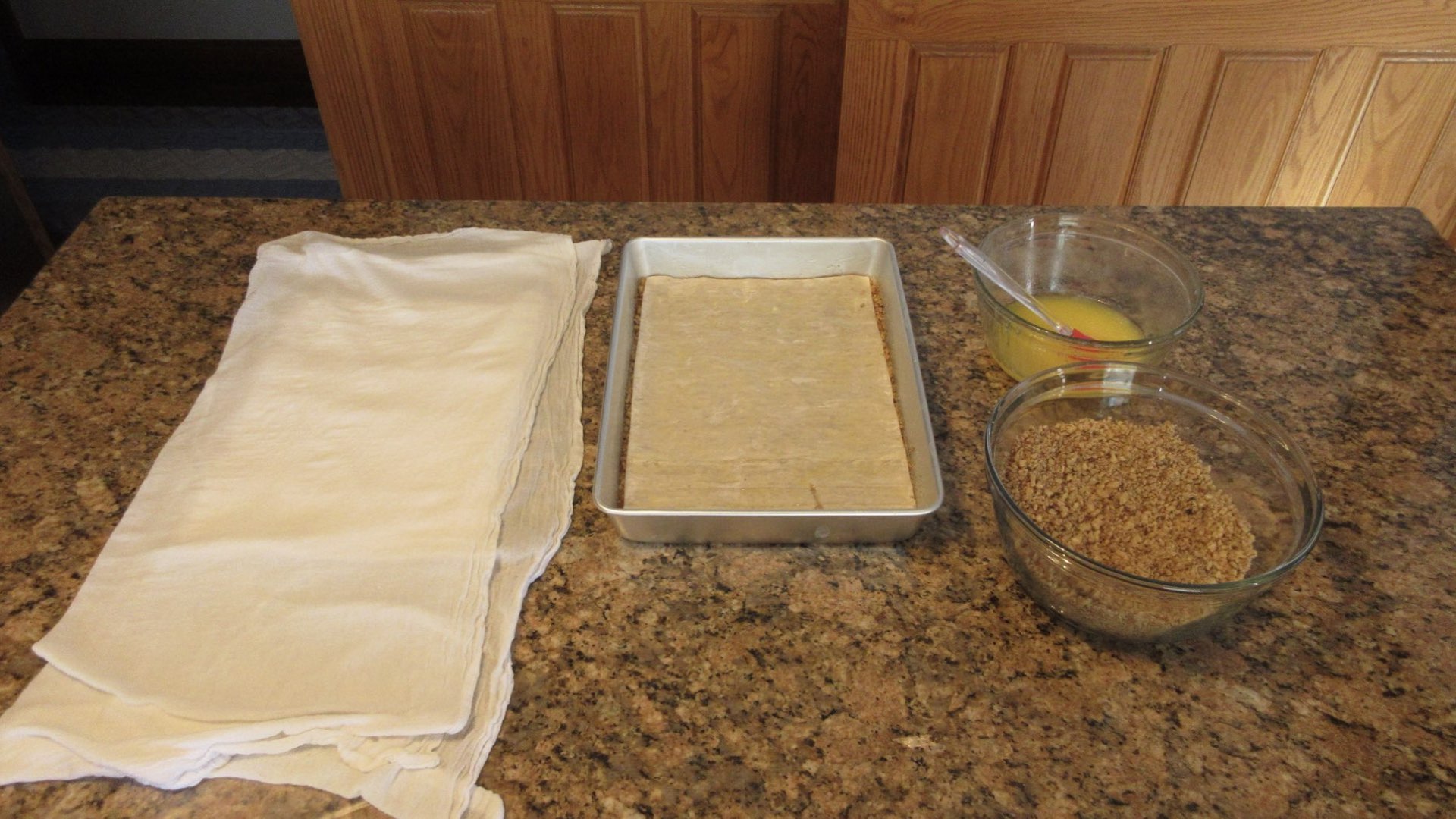
Now it’s time to spread on another 1/4 of the nut mixture. Same way as we did previously.

Then, you top with yet another 6 sheets of phyllo. Don’t forget to butter each individual sheet until you have all the layers.

We top with 1/4 cup of nut mixture. Spread it out evenly again.

Now we top the nuts with another 6 layers of phyllo and butter.

And we top this last layer of 6 buttered sheets of phyllo with the remaining nut mixture.

One last layer of phyllo as the sun is setting! This time you need 9 layers of phyllo and butter. Just like you did in the very beginning. If there is any remaining butter, feel free to pour it over the top.
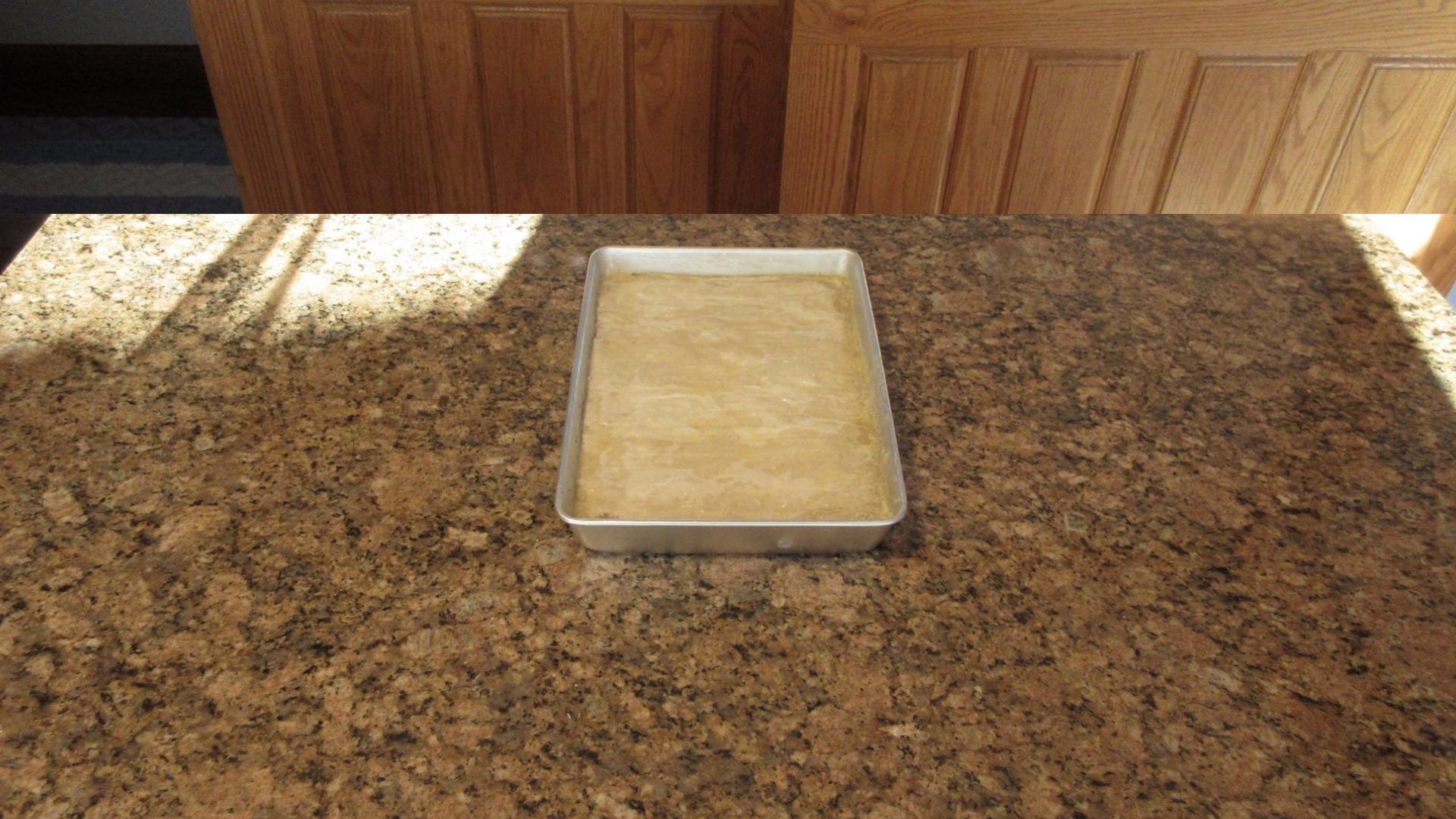
Step 6: Score and Bake the Baklava
Cut into 1 1/2″ (roughly 4 cm) diamond patterns for a traditional look or simply make squares. To make a diamond shape, cut diagonal from corner to corner starting in the center of the pan and work your way out left and right. Turn the pan 180° and repeat the cuts. Don’t worry if it’s not perfect. It still taste great.
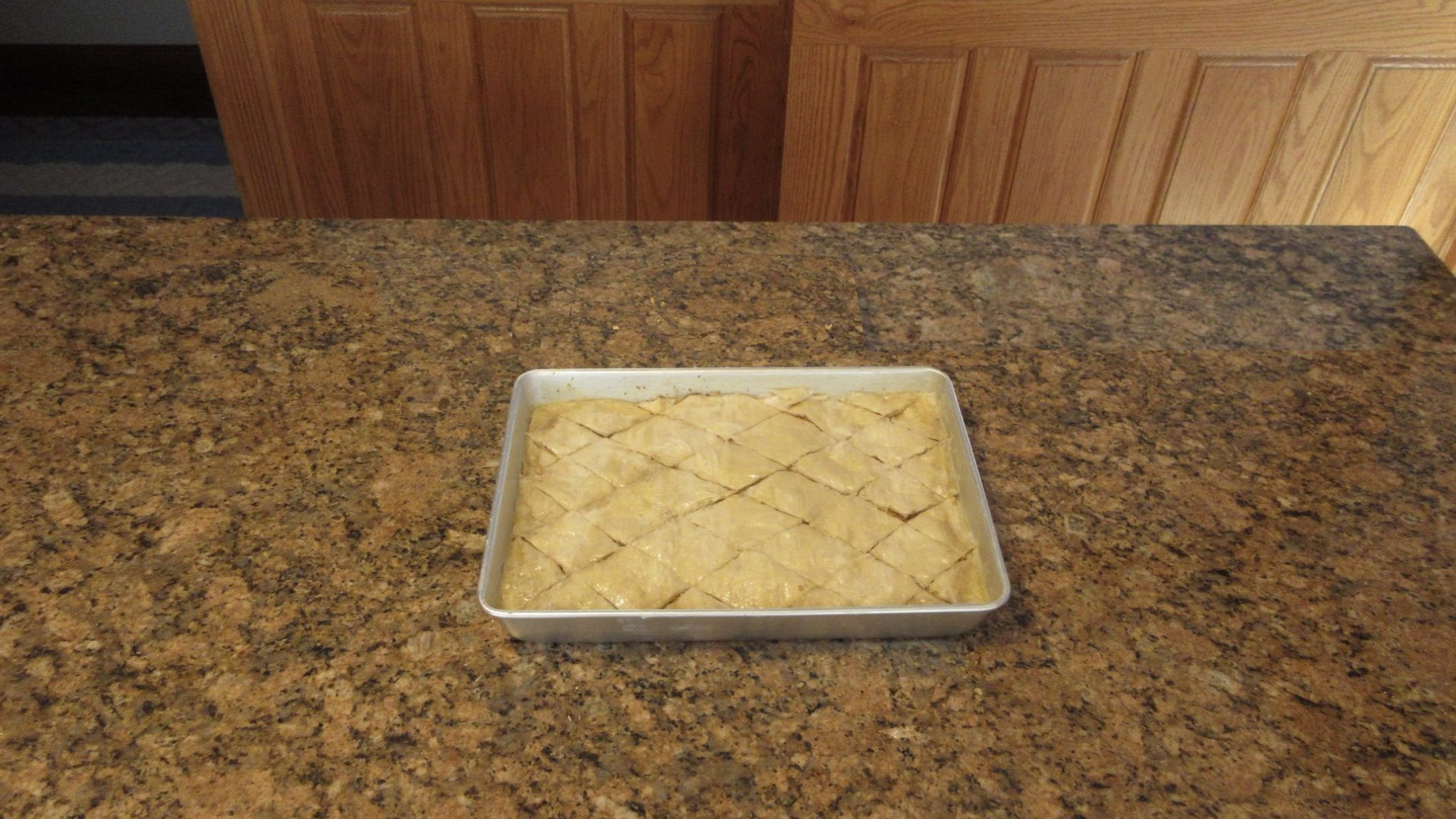
Bake 45 – 60 minutes until it is a light golden brown. It should look similar to this pan when well baked.
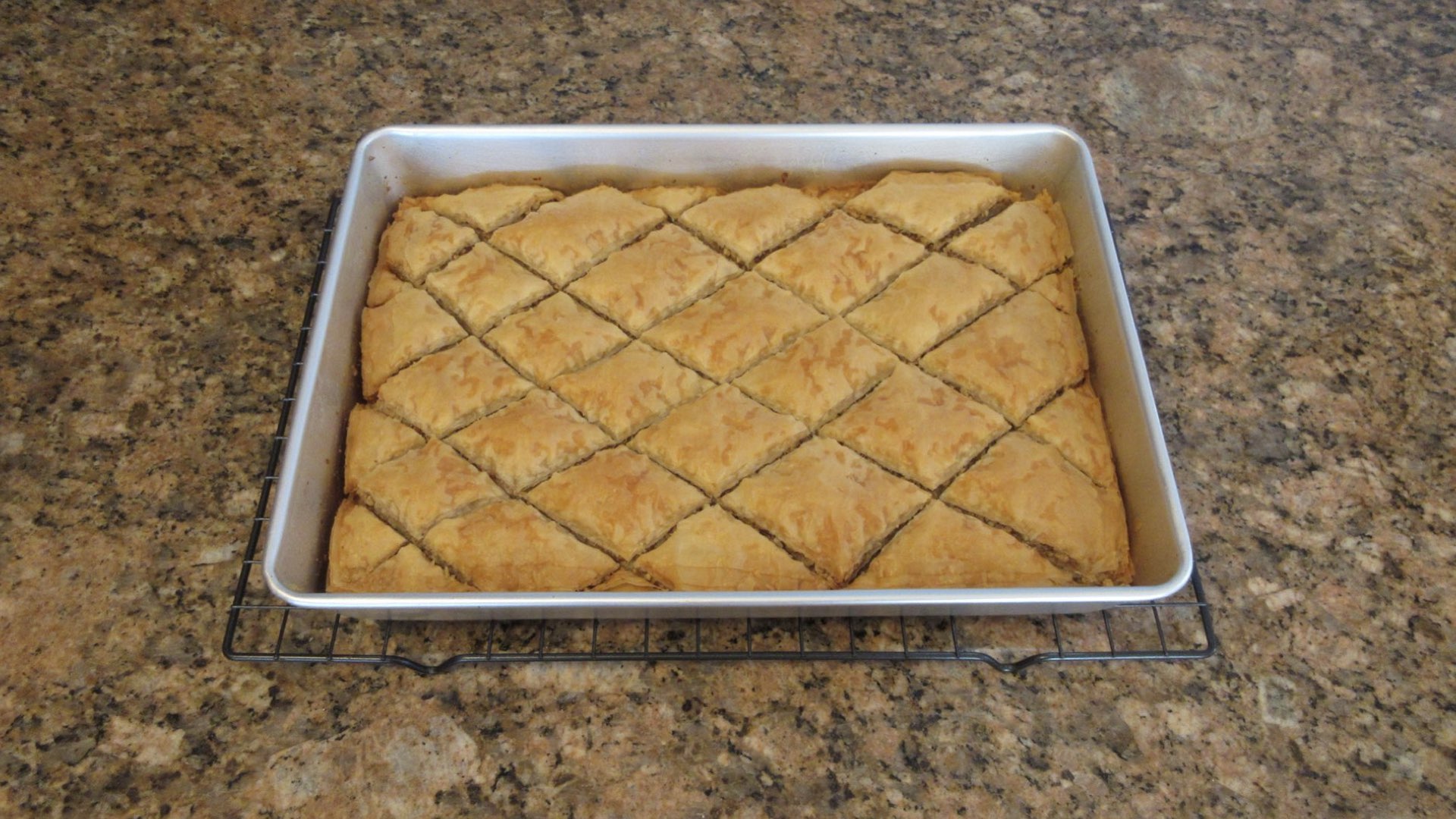
Pour the chilled syrup into cracks of the finished baklava. I hope you paid attention and didn’t use glass. If you used glass, don’t pour cold over hot to be safe. Warm the syrup up and risk soggy baklava. It’s better than potentially shattering glass. Doesn’t this look delicious?
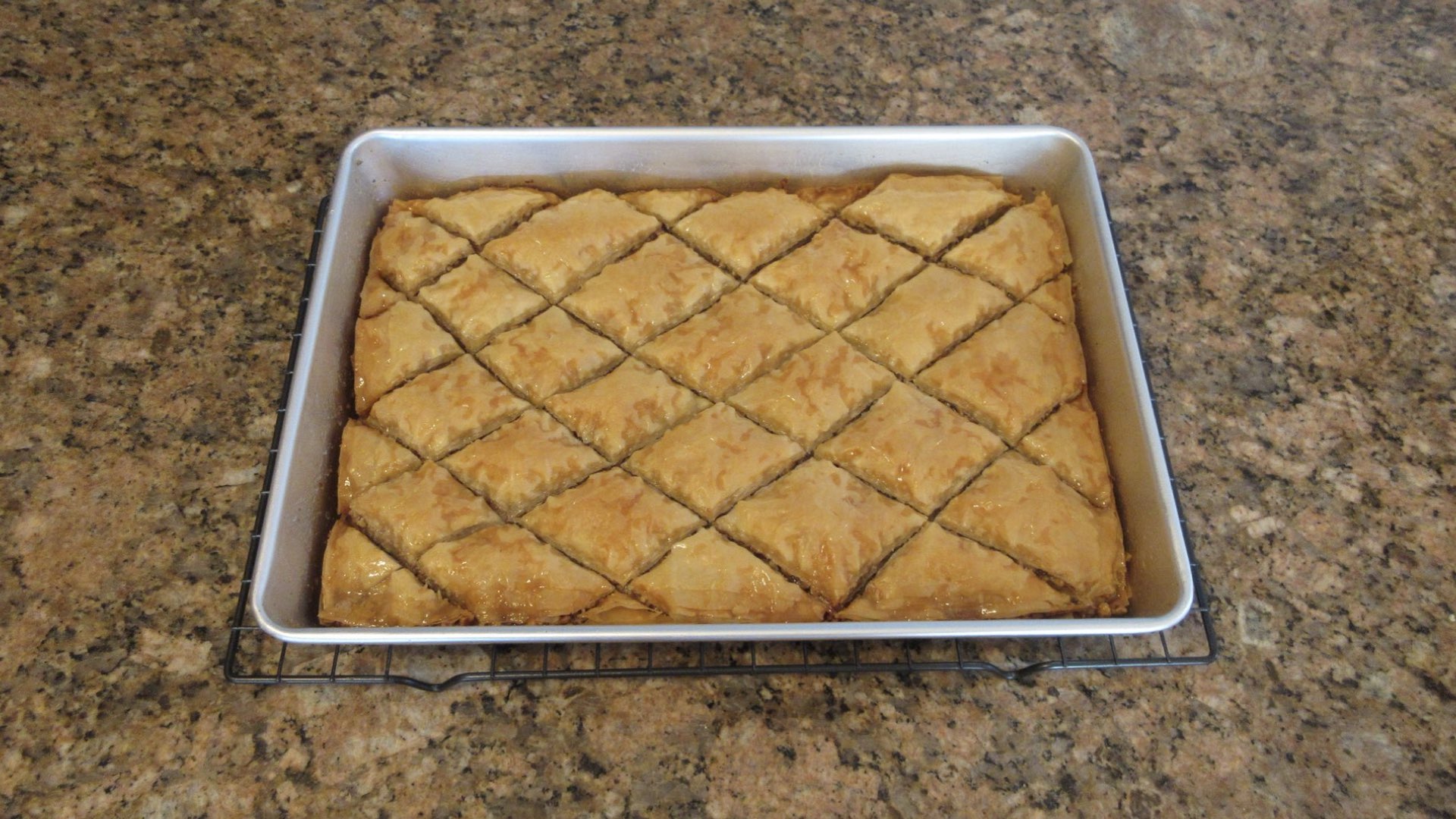
Now comes the hard part. You want to give the baklava a chance to soak up all that syrup. This happens with time. So we need to tent the top of the pan and let it set for several hours.

After a few hours, it’s finally ready. Slice and enjoy some of the best baklava you’ll ever eat!
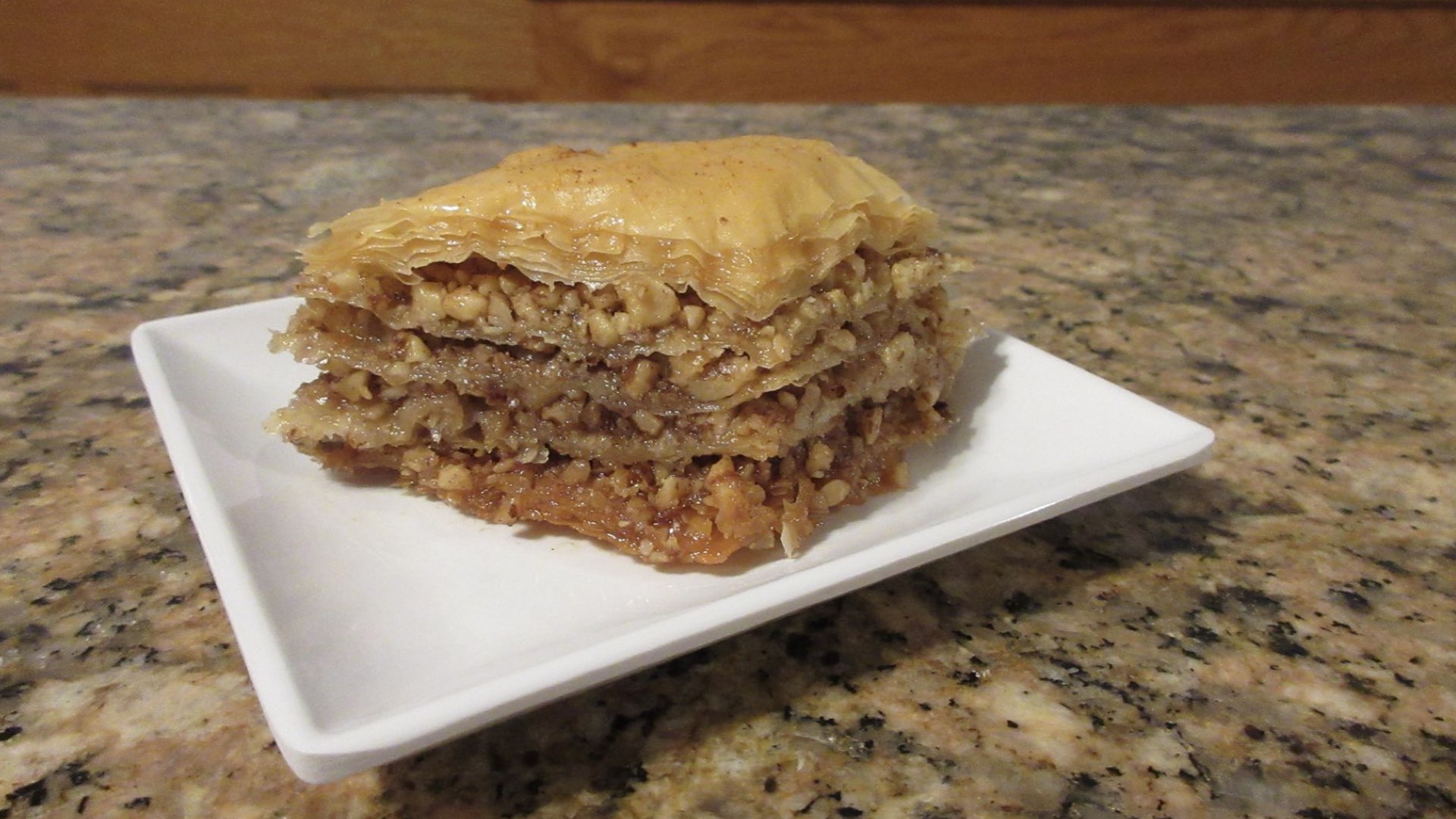
Substitutions
Here are some common substitutions or additions for the recipe.
- Almonds, pistachios, walnuts and pecans all work well for baklava. Feel free to mix and match one or a combination of nuts for this recipe. Some will argue you can only use a particular type of nuts. We say they are all delicious in their own way!
- Other spices can be added to the nut mixture. Try some cardamom, cloves, nutmeg or allspice in small amounts (1/8 tsp or .5g) and see what flavor combinations you like best.
- Cinnamon can be replaced with pumpkin pie spice for a more festive version. But don’t get made at us if you suddenly start shopping for expensive coffee and getting strange haircuts.
- A tsp (5mL) of rose or orange blossom water is often added to the syrup. This gives the baklava both a fragrant and pleasant floral undertone. Feel free to experiment.
Storage
Baklava is one of those unique baked goods. It has an extensive shelf life where it can last a couple of weeks or even a bit longer if stored properly. When baked and stored properly, baklava has a unique composition that makes it prone to spoilage. It often dries out before they go bad.
Store the pieces in an airtight container in the refrigerator or at room temperature. They will stay more crisp at room temperature. They take on a chewy texture when chilled. We personally like to keep ours loosely covered as they don’t last long in our house. This keeps them both crisp and chewy like they are supposed to be.
Can baklava be frozen? Yes, but we don’t recommend freezing baked baklava. It takes on an odd texture when it thaws out. It’s not terrible, but it’s not…great, either. Rather, skip making the syrup and just assemble the baklava. Now, prior to baking, wrap well and freeze it in the baking dish. Make sure the dish you use is suitable for freezing. We like to use disposable (they are also recyclable) pan for this feat as we are often giving them away as gifts. Then you can either bake it straight from the freezer and add about 10-20 minutes baking time or thaw it overnight in the fridge and bake it as usual. Happy baking!

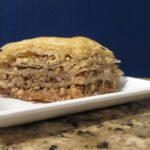
Baklava Recipe
Ingredients
Syrup
- 1 ½ cups (300g) sugar
- ¾ cup (180mL) hot water
- 1 tbs (21g) honey
- 2 tsp (10mL) lemon juice
- 1 tsp (1g) lemon zest
Baklava
- 1 package (454g) phyllo
- 1 pound (454g) finely chopped nuts*
- 1 ½ cups (339g) butter, melted
- 2 tbs (28g) brown sugar
- 1 ½ tsp (3g) cinnamon
- ⅛ tsp (1g) salt
Instructions
For the Syrup
- Rinse lemon under cool water and dry throughly. Zest and juice the lemon.
- In a heavy bottom saucepan, combine sugar, water, honey, lemon juice and zest. Stir until it no longer dissolves.
- Turn heat to medium, stirring frequently until all the sugar dissolves. This can take around 15 minutes, so be patient. Once mixture starts to boil, cover and cook 2 minutes. Uncover and continue to boil for 4 additional minutes or until mixture reaches 230F (110C.)
- Remove from heat and allow syrup to cool in pan before transferring into a heat proof container. Do not scrape down sides to prevent crystallization. Chill overnight or until syrup is cold.
For the Baklava
- Preheat oven to 325F (170C.)
- If using frozen phyllo, thaw overnight in the fridge or on the counter for 2 – 3 hours.
- Unroll and cover phyllo sheets with plastic wrap, then a slightly damp towel to prevent drying out. If needed, trim one of the edges so the phyllo fits inside the baking pan.
- Melt butter using the microwave or stovetop. Generously brush the bottom and sides of a 9x13x2 (23x33x5cm) baking pan with melted butter.
- Remove the towel and plastic wrap and carefully place one sheet of the phyllo into the pan. Immediately cover up remaining phyllo to prevent drying out as you work.
- Layer 6 more phyllo sheets on top, brushing each sheet thinly with butter. Cover with 1/4 of the nut mixture. Repeat this step 2 more times.
- Cover the remaining nut mixture with another 9 phyllo sheets, brushing each with butter.
- Brush the top generously with the remaining butter. With a sharp knife, score phyllo into 1 1/2″ diamonds or squares.
- Bake for 45 – 60 minutes or until golden brown.
- Store leftovers in an airtight container.
0 Comments